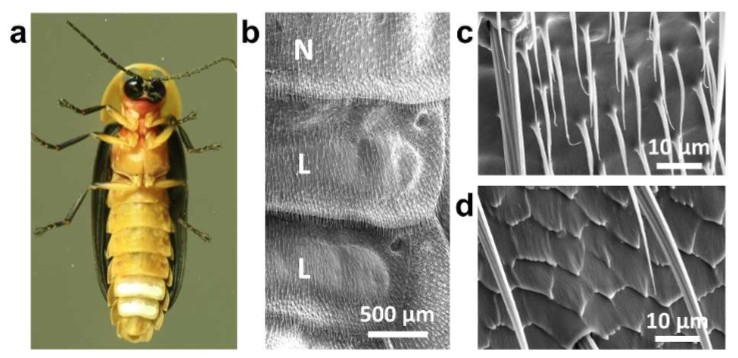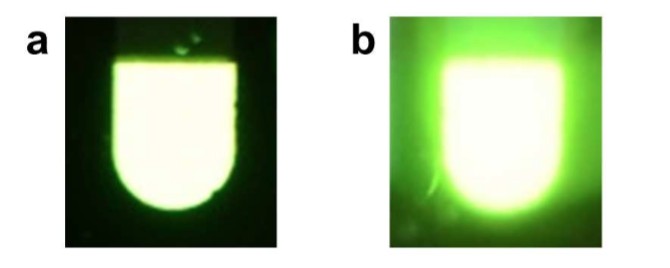Fireflies, or lightning bugs, are undoubtedly one of the many joys of summer. Children chase and catch them, temporarily distracting the insects from their important mission of finding love.
Assisting the bugs in this romantic calling are their luminous rear ends, which flash brilliant yellow. The lanterns consist of three layers, and the one in the middle produces light. The other two layers consist of microstructures that manipulate light in such a way as to increase transmission.
The authors investigated this phenomenon more closely in the firely Pyrocoelia rufa. They began by using a scanning electron microscope to image the microstructures.
 Credit: Jae-Jun Kim et al. Nano Lett. DOI: 10.1021/acs.nanolett.5b05183
Credit: Jae-Jun Kim et al. Nano Lett. DOI: 10.1021/acs.nanolett.5b05183
The team found that these structures improved light transmission through various optical tricks, for instance by index matching and reducing internal reflection. Essentially, the firefly abdomen is a well-built organic light-emitting diode (OLED).
Mimicking these structures, the researchers created their own OLED. A side-by-side comparison depicts how the structure of the firefly lantern is similar to the OLED. (The left side of the panel depicts a firefly; the right side an OLED.)
 Credit: Jae-Jun Kim et al. Nano Lett. DOI: 10.1021/acs.nanolett.5b05183
Credit: Jae-Jun Kim et al. Nano Lett. DOI: 10.1021/acs.nanolett.5b05183
Finally, the researchers compared how a normal OLED compared with the enhanced OLED featuring firefly-inspired microstructures. As shown below, the enhanced OLEDs were roughly 35% to 61% brighter, as measured by external quantum efficiency (i.e., "the ratio of the number of photons emitted from the LED to the number of electrons passing through the device."
 Credit: Jae-Jun Kim et al. Nano Lett. DOI: 10.1021/acs.nanolett.5b05183
Credit: Jae-Jun Kim et al. Nano Lett. DOI: 10.1021/acs.nanolett.5b05183
Perhaps firefly-inspired OLEDs soon will be coming to a store near you?
Source: Jae-Jun Kim, Jaeho Lee, Sung-Pyo Yang, Ha Gon Kim, Hee-Seok Kweon, Seung-Hyup Yoo, and Ki-Hun Jeong. "Biologically Inspired Organic Light-Emitting Diodes." Nano Lett. Published online: 25-Mar-2016 DOI: DOI: 10.1021/acs.nanolett.5b05183



